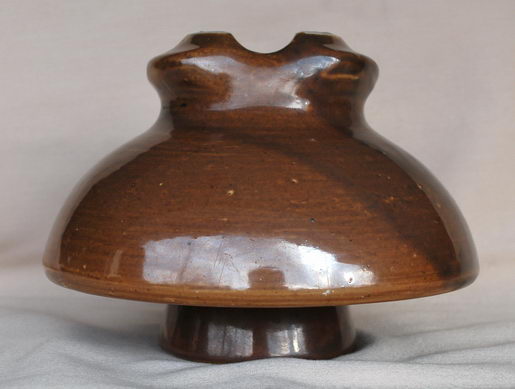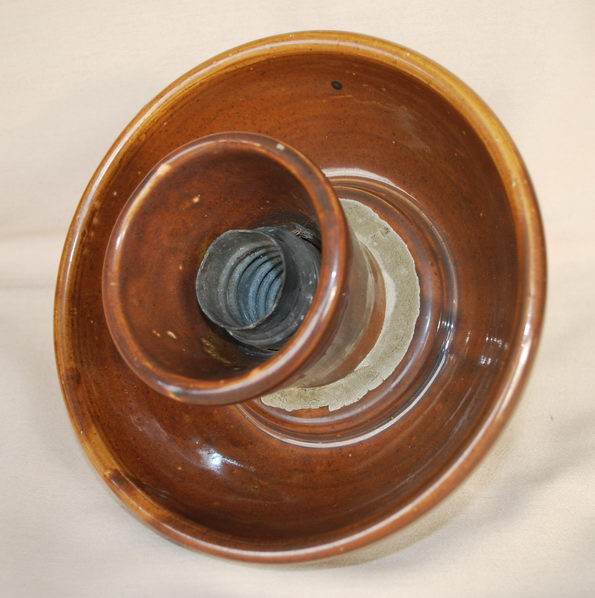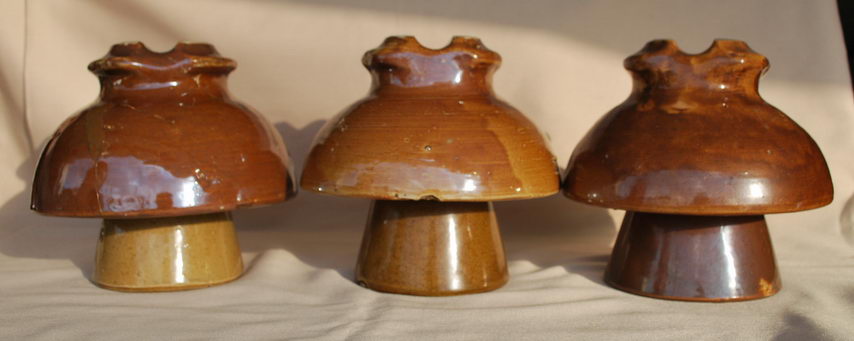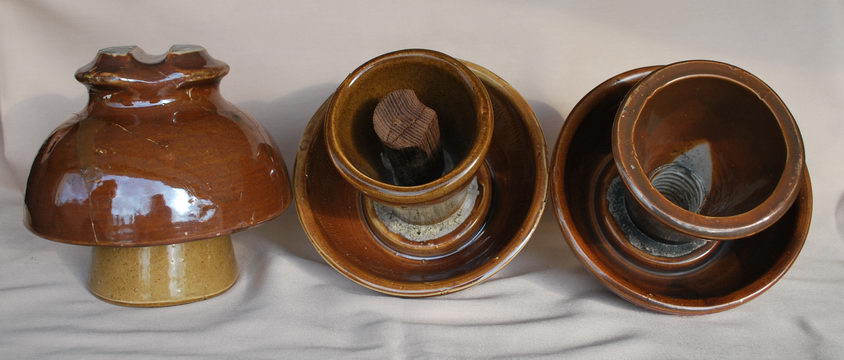

Fred Locke
Multipart Porcelain Insulators
(page 1 of 6)
Go to Main Page
Go to Multipart History Page 1 Page 2 Page 3 Page 4 Page 5 Page 6
Click on the links below to view each style:
M-2842D
M-2010
(Locke catalog #)
Production date:
M-2053
(Locke catalog #)
Production date:
M-2121
(Locke catalog #)
Production date:
M-2201
(Locke catalog #)
Production date:
M-2203
(Locke catalog #)
Production date:
M-2220B
(Locke catalog #101)
Production date:1903-04


M-2220B
This insulator design first
appeared in 1903 and was listed in the 1904 catalog. In subsequent years after
Fred Locke departed from Victor, it was a design that became somewhat popular
with many utilities and was made by many manufacturers in the 1904-1925 era.
Specimens of this insulator
with Fred Locke markings and/or characteristics are known to have been used on
only one line that was north of Medford, OR.
One unmarked and two marked specimens are known. The line also had U-964
Fred Locke specimens. M-2202 uses
the same inner skirt as M-2332 and the same top as M-2250.
The two marked specimens have marking 7-1.
M-2250
(Locke catalog #103)
Production date: 1902-04

Early 2-part mold (left), 3-part mold normal bottom skirt (center), 3-part mold with enlarged skirt

M-2250
This design began
production in late 1902 when an order was placed by the Hudson River Waterpower
Co. based in the Schenectady, N.Y area for use in their substations and on 10 kV
primary lines. These first insulators were made in two-part molds.
Only two specimens of these have been reported with marking 6-1.
Subsequent orders for these
by the same company were made in the 1903-04 era and have marking 6-1 or 7-1 or
were unmarked and had tops made in three-part molds. A few specimens
were assembled with sulfur cement that came from within the Spier Falls power
station that were removed by the chief operator around 1970. Others found
elsewhere on their system used Portland cement and sand.
M-2250 was also used on the
interurban line from Dayton to Toledo, OH.
These specimens were made in three-part molds and have been found with
marking 6-1 or 7-1. Two specimens have been located at flea markets in the
Columbus, OH area. Some of the specimens from Ohio have an enlarged bottom
skirt as described in the 1903 Ohio Brass catalog. The intention of the
larger flat-bottom skirt was to allow the insulator to screw down and rest on
the crossarm for additional strength. This is idea was covered by Fred
Locke's patent No. 796,977.
Less then a dozen marked
M-2250 specimens are known. Most
specimens have unglazed pinholes. A
few unmarked specimens have also surfaced, but their exact history is unknown at
this time.
Go to Multipart History Page 1 Page 2 Page 3 Page 4 Page 5 Page 6
Go to Main Page